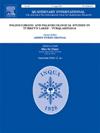The evolution of hydrography in the retro-wedge side of an orogen under extension: The case of the River Aniene in the central Apennines (Italy)
IF 1.9
3区 地球科学
Q3 GEOGRAPHY, PHYSICAL
引用次数: 0
Abstract
In the retro-wedge side of a mountain chain undergoing back-arc extension, the progressive development of the fluvial network is controlled by the interaction of the uplift of the orogen, the activity of tectonic structures, and the climate. Many studies have evidenced the continuous competition between the activity of the normal faults that generate intermontane basins and rivers that incise and erode headward. Less attention has been paid to the role of the extensional structures that border the basins at the foot of the orogen and close to the base level (the back-arc basin) in the development of the hydrography draining their footwall. Could these structures influence or even prevent the integration of the fluvial network into the retro-wedge side of an uplifting orogen? To answer to this question, we studied the Aniene R., a tributary of the Tiber R. that drains the western side of the central Apennines (Italy). Studying the geometry of the topography and hydrography of its basin, surveying some key areas, dating deposits, and inverting its longitudinal profile, we reconstructed the landscape evolution of the drainage basin. In particular, we provide new evidence on the involvement of the structures bordering the low-standing extensional basins in the drainage development. Indeed, the flexural uplift of their footwall can hamper their flow down to the base level closing temporary the upstream drainage basin and so influencing the alternating phases of erosion and deposition controlled by uplift and climate.
伸展作用下造山带楔后侧的水文演化:以亚平宁山脉中部(意大利)的阿涅涅河为例
在弧后伸展的山链楔后侧,造山带隆升、构造活动和气候的相互作用控制着河流网的递进发育。许多研究已经证明,产生山间盆地的正断层活动与向前方切割和侵蚀的河流之间存在着持续的竞争。在造山带底部与盆地接壤并接近基准面(弧后盆地)的伸展构造在排水其下盘的水文发育中的作用较少受到关注。这些构造是否会影响甚至阻止河流网整合到隆升造山带的楔后侧?为了回答这个问题,我们研究了阿尼尼河,它是台伯河的一条支流,流经亚平宁山脉中部(意大利)的西部。通过对流域地形地貌和水文几何特征的研究,对重点区域进行调查,对沉积物定年,并对流域纵剖面进行反演,重建了流域景观演变过程。特别地,我们提供了与低洼伸展盆地接壤的构造参与水系发育的新证据。事实上,它们下盘的弯曲隆起会阻碍它们向基准面流动,暂时关闭上游流域,从而影响由隆起和气候控制的侵蚀和沉积交替阶段。
本文章由计算机程序翻译,如有差异,请以英文原文为准。
求助全文
约1分钟内获得全文
求助全文
来源期刊

Quaternary International
地学-地球科学综合
CiteScore
5.60
自引率
4.50%
发文量
336
审稿时长
3 months
期刊介绍:
Quaternary International is the official journal of the International Union for Quaternary Research. The objectives are to publish a high quality scientific journal under the auspices of the premier Quaternary association that reflects the interdisciplinary nature of INQUA and records recent advances in Quaternary science that appeal to a wide audience.
This series will encompass all the full spectrum of the physical and natural sciences that are commonly employed in solving Quaternary problems. The policy is to publish peer refereed collected research papers from symposia, workshops and meetings sponsored by INQUA. In addition, other organizations may request publication of their collected works pertaining to the Quaternary.
 求助内容:
求助内容: 应助结果提醒方式:
应助结果提醒方式:


